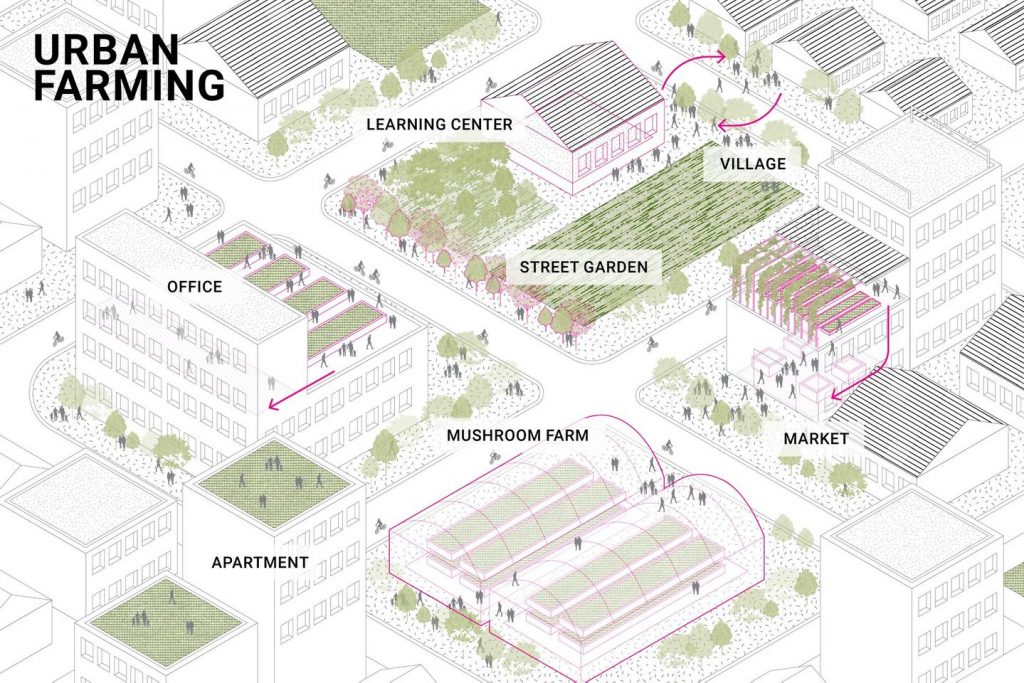
From Edible Garden to Urban Farm
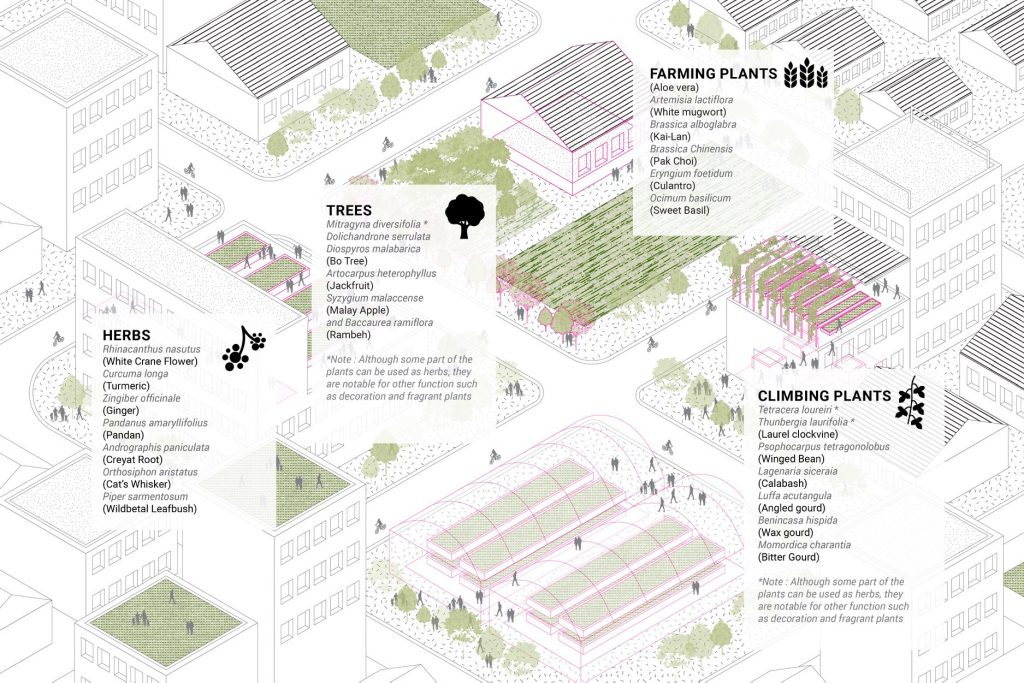
1 What is Urban Agriculture or Urban Farming ?
In recent years, “Urban Farm” has become a global trend across big cities, allowing them to be self-sustained. Urban Farming means the practice of producing, processing and marketing of food (plants and animals) in the urban area, by using ecological and economical knowledge to meet each urban context. It actually requires workforces and resources from the cities such as organic wastes, used as fertilizer, and community wastewater, used for irrigation.
.
As a result, Urban Farm can be seen as a part of cities’ food chain, enhancing its own food security, serving safe and fresh foods to the citizens. Urban sectors can also save costs from product transportation from outside, helping reduce Carbon Footprint. This green cultivating space will not only perform as a communal public space, but also an interactive learning space where people can join in and adapt the know-how to grow foods at their homes. However, to truly develop a sustainable city, the state and every sector should plan ahead and manage these areas thoughtfully to serve the local context and meet the amount of space.
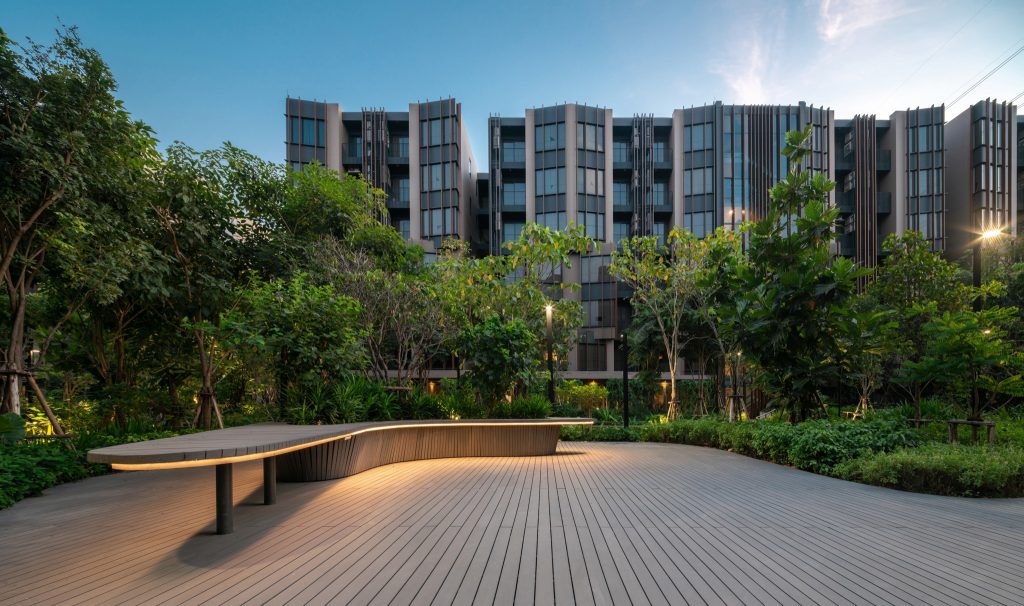
.
With the help of the edible garden, located in front of every residential building, inviting everyone to come and take a rest while cultivating the food they grew, including Morus (Mulberry), Bouea Macrophylla (Marian Plum), Boueaburmanica Griff (Marian Plum), Solanum melongena Linn (Thai Eggplant), Telosma cordata (Cowslip creeper), Ocimum basilicum (Sweet Basil), and Ocimum sanctum (Holy Basil). Outdoor dining can also occasionally be held along with enjoying learning workshops about gardening.
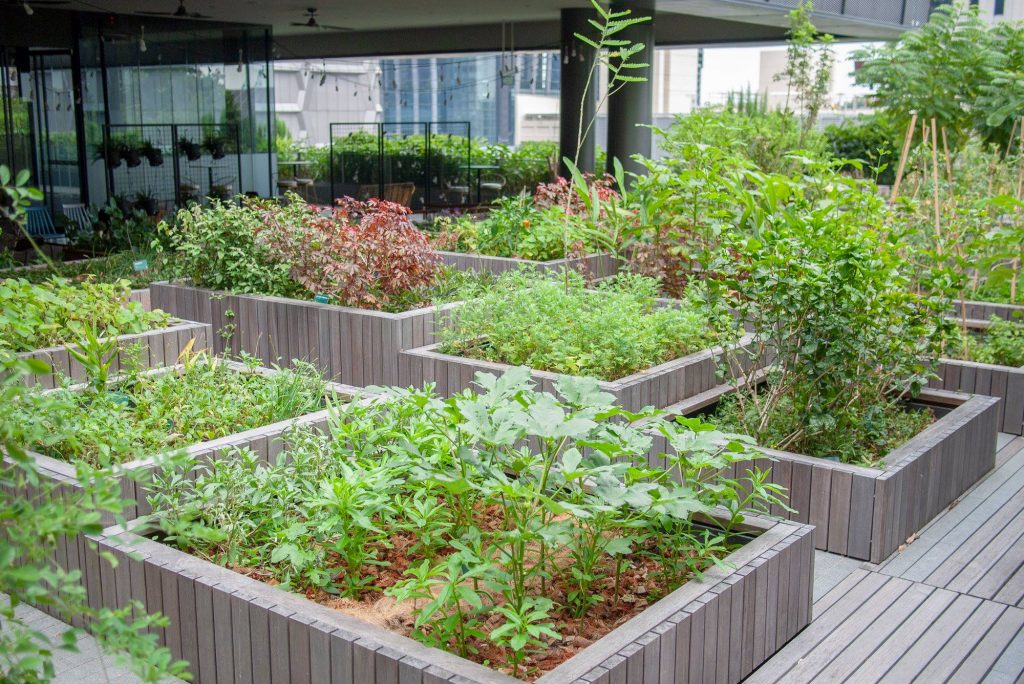
.
Information and Photo Credits : Edible Garden City (https://www.facebook.com/EdibleGardenCityProject)
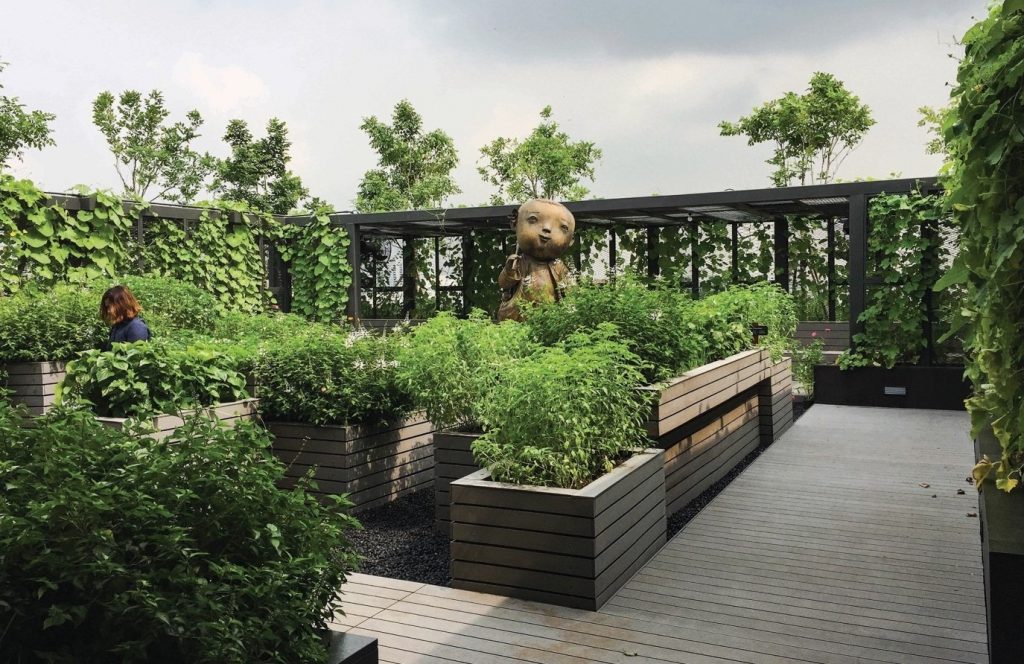
4 Thai health Promotion Office
Located at the terrace floor of Thai Health Promotion Office, City’s urban farm promotes an alternative roof garden with the concept of “Do it yourself at home,” encouraging Thai citizens to grow their own food according to such corporate policy. Designed by Shma Soen, the garden is planned through a participation process with the owner, manager, exhibitor and farm expert, in order to get the most suitable space for everyone. Apart from this terrace garden, the building also comprises office, workshop room, and fitness , functioning as a contemporary learning space in Soi Ngamduplee.
.
Information and Photo Credits : Shma Soen
(https://shmasoen.com/portfolio/terrace-edible-garden/)
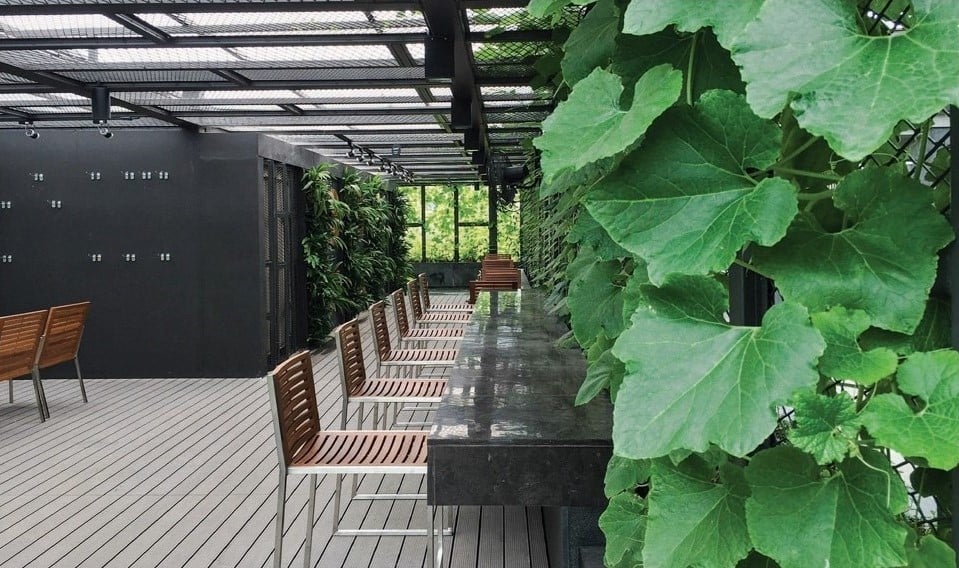
5 Thai health promotion office
The growing area is arranged in a way that receives excessive sunlight with more than 1.5-meter accessible paths for all people. Here, certain organic plants are grown, including shrubs and trees – Solanum wrightii Benth (Brazilian Potato), Lycopersicon esculuentum (Tomato), Cymbopogon citratus (Lemon Grass), Eryngium foetidum (Cilantro), Ocimum basilicum (Lemon Basil), Apium graveolens (Celery), Orthosiphon aristatus (Java Tea), Allium cepa var. Aggregatum (Potato Onion), and Ocimum basilicum (Sweet Basil). Climbing plants like Tetracera loureiri, Thunbergia laurifolia (Laurel clockvine) and Thunbergia grandiflora (Blue Trumpet Vine) are also combined together within the garden.
.
Moreover, located at the same floor, there are also mushroom farms and openair indoor classrooms decorated with extra climbing plants – Psophocarpus tetragonolobus (Winged Bean), Lagenaria siceraia (Calabash), Luffa acutangula (Angled gourd), Benincasa hispida (Wax gourd), Momordica charantia (Bitter Gourd), offering a pleasant atmosphere as well.
.
The overall rooftop space is taken care of by a farm expert from Thai City Farm team, who make a visit once a week. All products are properly cultivated, distributed to restaurants in the building’s canteen, and sold freshly to customers at reasonable prices.
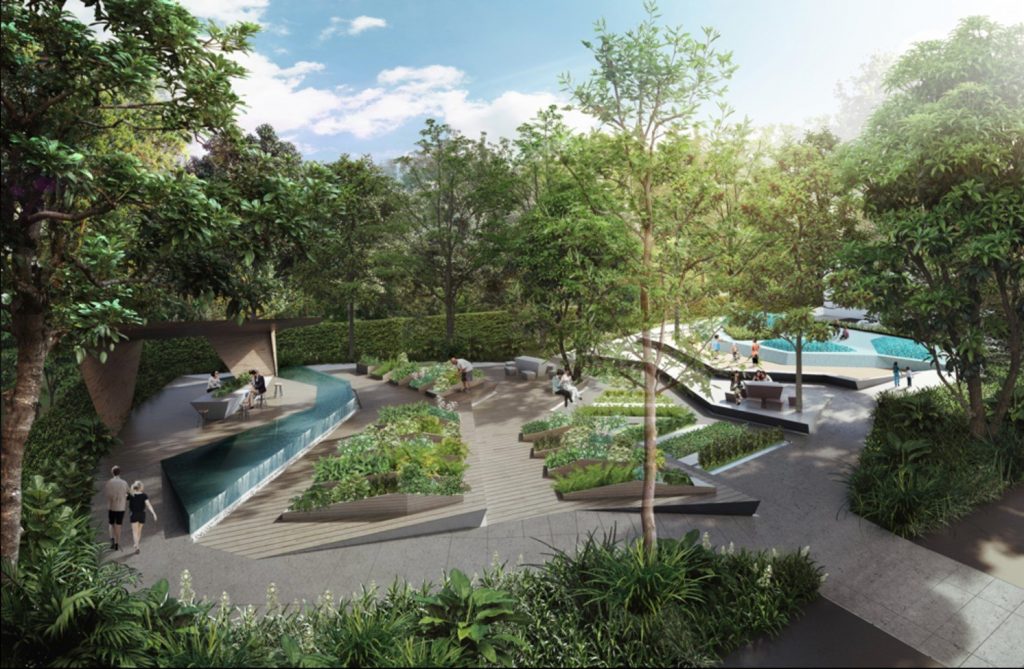
6 One9Five
Although One9Five is a luxury condominium located on Rama 9 Road, Bangkok’s new CBD, a local down-to-earth program like 1-Rai Urban Farm is also integrated as one of its highlights, based on the concept of “sustainable oasis for contemporary lifestyle.” The space comprises edible plants growing area, playground and outdoor communal kitchen, fostering such a sense of community and interaction between the residents.
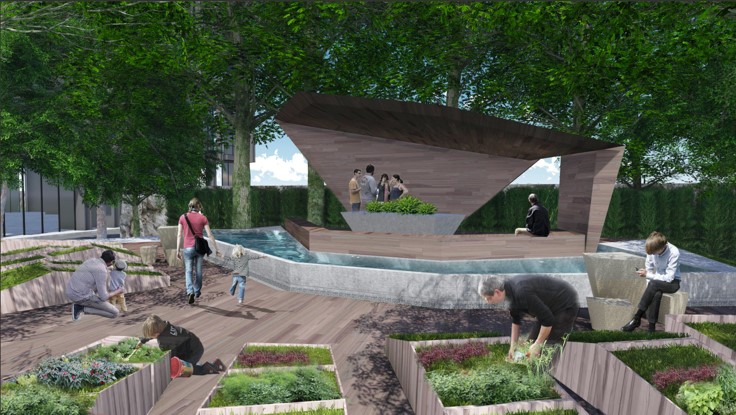
7 One9Five
For this common space, its lowest level acts as a water detention area with the use of aquaponic plants. The higher level is an edible garden made up of planters for various species that can be cultivated in 1-2 months. They include Aloe vera, Artemisia lactiflora (White mugwort), Brassica alboglabra (Kai-Lan), Brassica Chinensis (Pak Choi) , Eryngium foetidum (Culantro), Sauropus androgynus, Ocimum basilicum (Sweet Basil), and Ocimum sanctum (Holy Basil), along with Climbing plants like Luffa acutangula (Angled gourd), Momordica cochinchinensis (Gac fruit),and Piper nigrum (Pepper). All of them need to be newly grown, constantly substituting the older ones with a systematic maintenance. Lastly, there are two programs at the highest level – co-kitchen at the north and playground at the south.
.
In overall, to fully create a delightful atmosphere, various Perennials – Mitragyna diversifolia, Dolichandrone serrulata, Diospyros malabarica (Bo Tree), Artocarpus heterophyllus (Jackfruit), Syzygium malaccense (Malay Apple), and Baccaurea ramiflora (Rambeh) are added, scattered around the site as well.

